Abstract
A retarded child was taught to imitate diverse demonstrations made by an experimenter, until new demonstrations were imitated correctly upon first presentation without direct training. These imitations could be maintained without reinforcement, when they were distributed among other reinforced imitations. Factors responsible for the continued performance of these unreinforced imitations were examined. When subjected to massed extinction trials, unreinforced imitations eventually disappeared; they reappeared when again interspersed among reinforced imitations. In addition, the stimulus function of “similarity of response between subject and experimenter” was examined. The subject was taught a set of non-imitative responses, through discriminative stimuli controlled by the experimenter, and a comparable imitative set. Unreinforced non-imitations, like reinforced imitations, were maintained only when interspersed among reinforced imitations. When all reinforcement was discontinued, all responses extinguished similarly, indicating that reinforcement was necessary to maintain the response-class organization, but not confirming an essential role for “similarity” as such.
Full text
PDF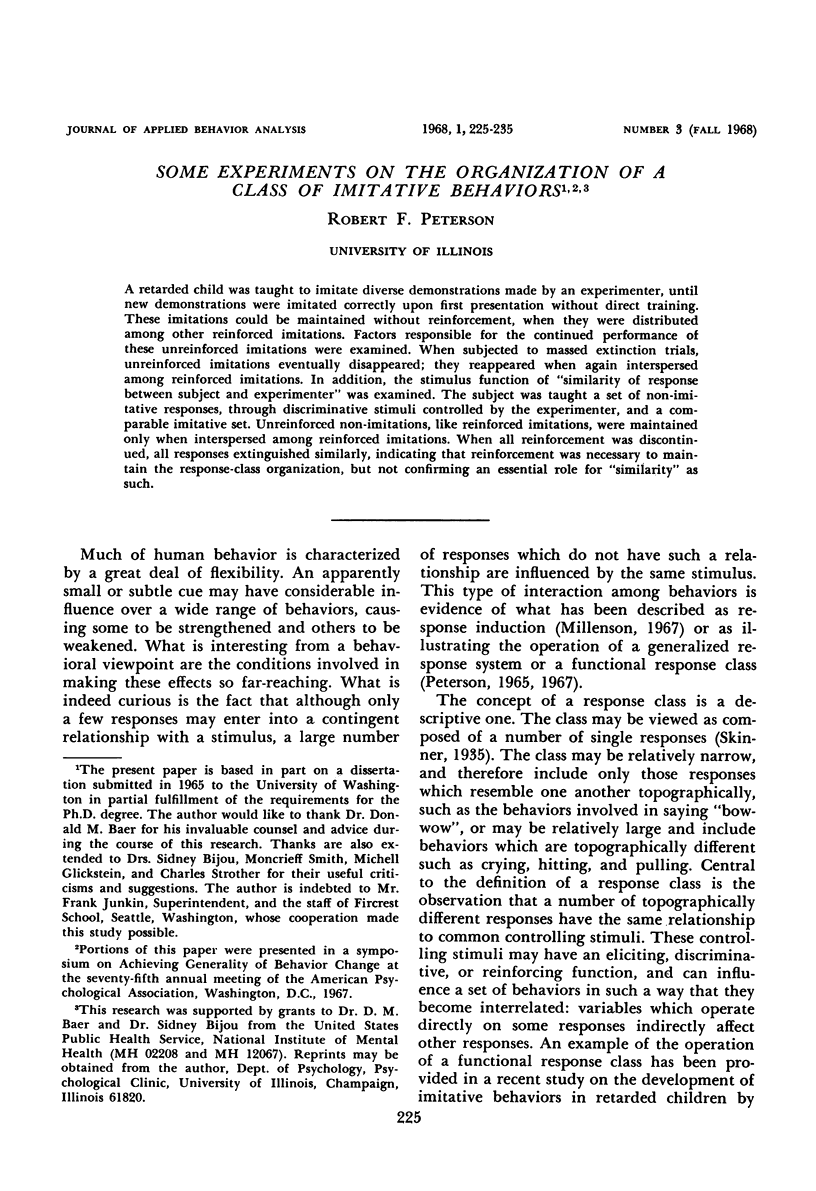

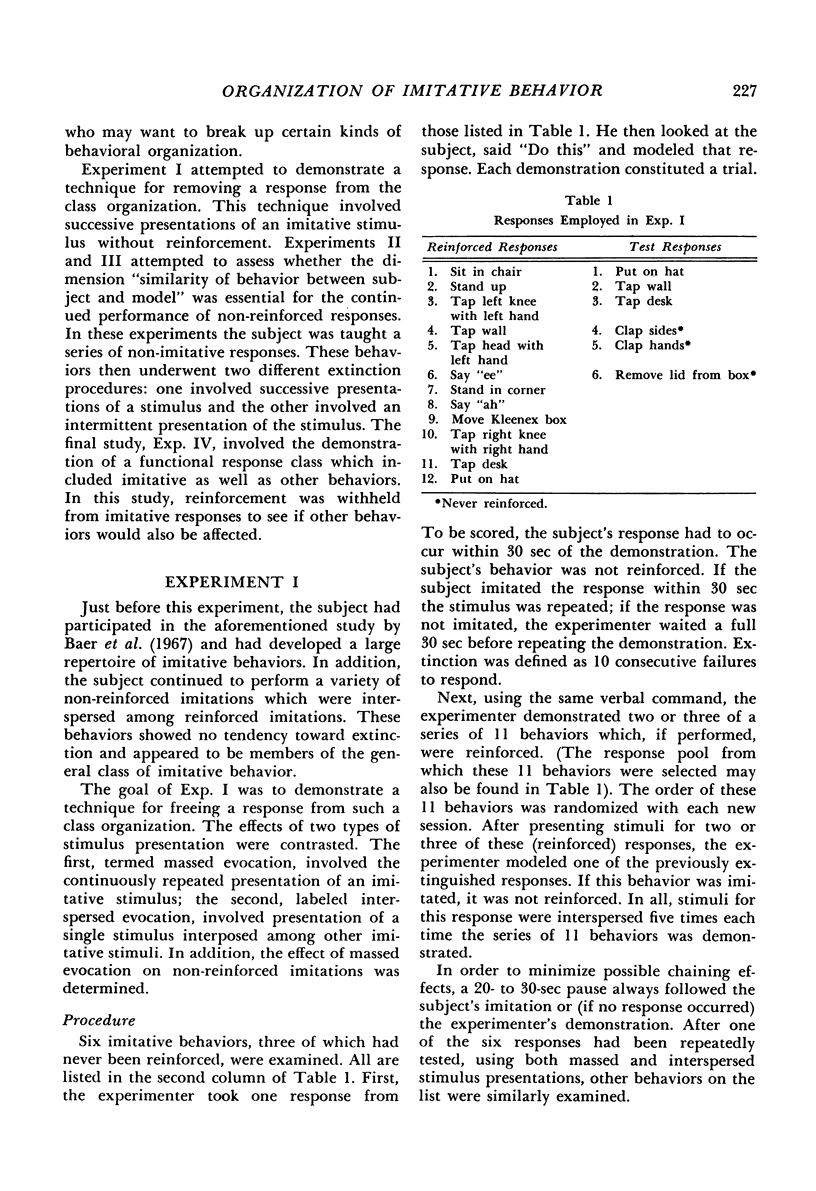
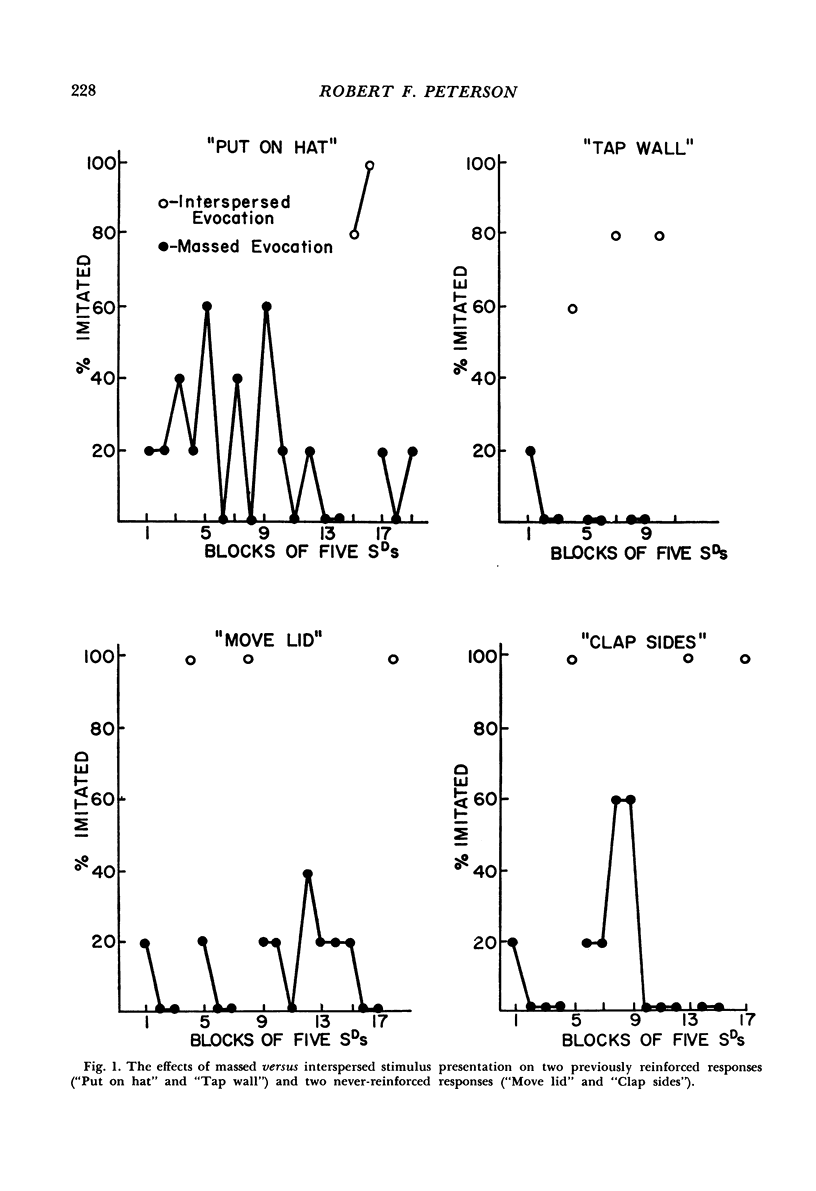
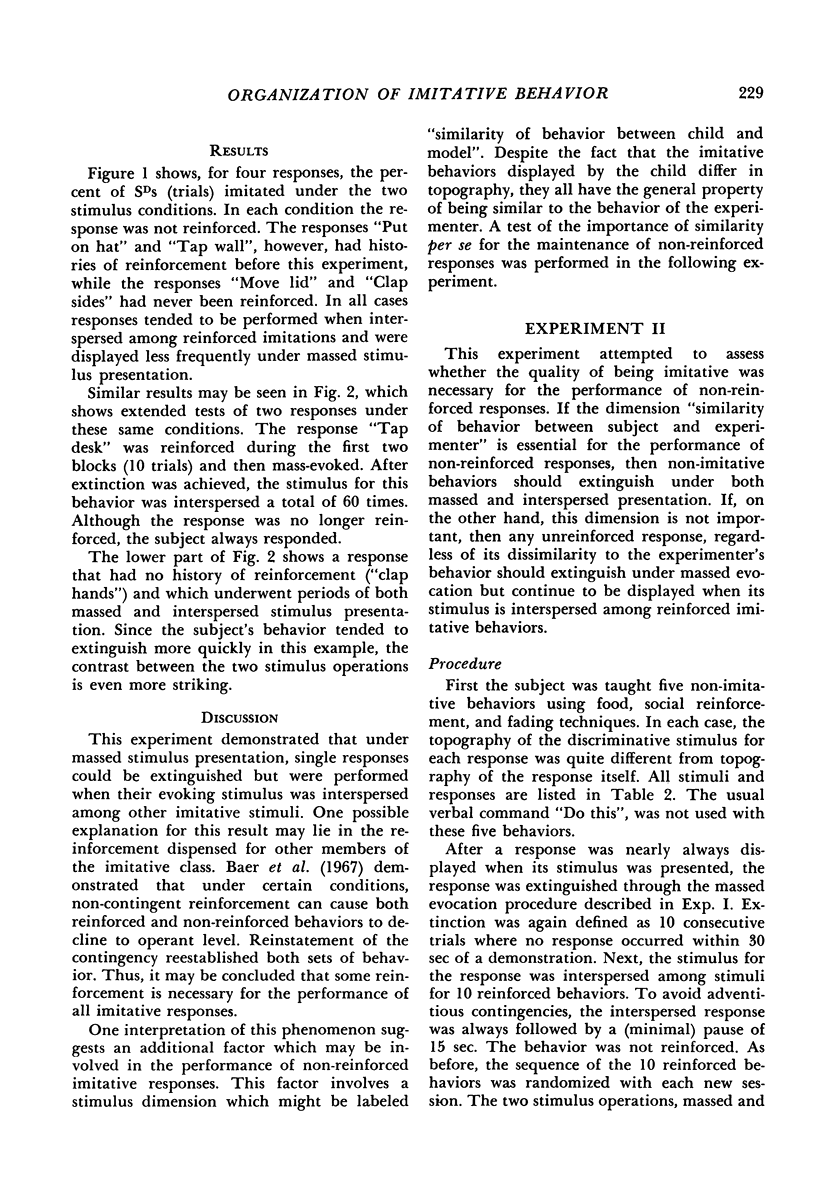
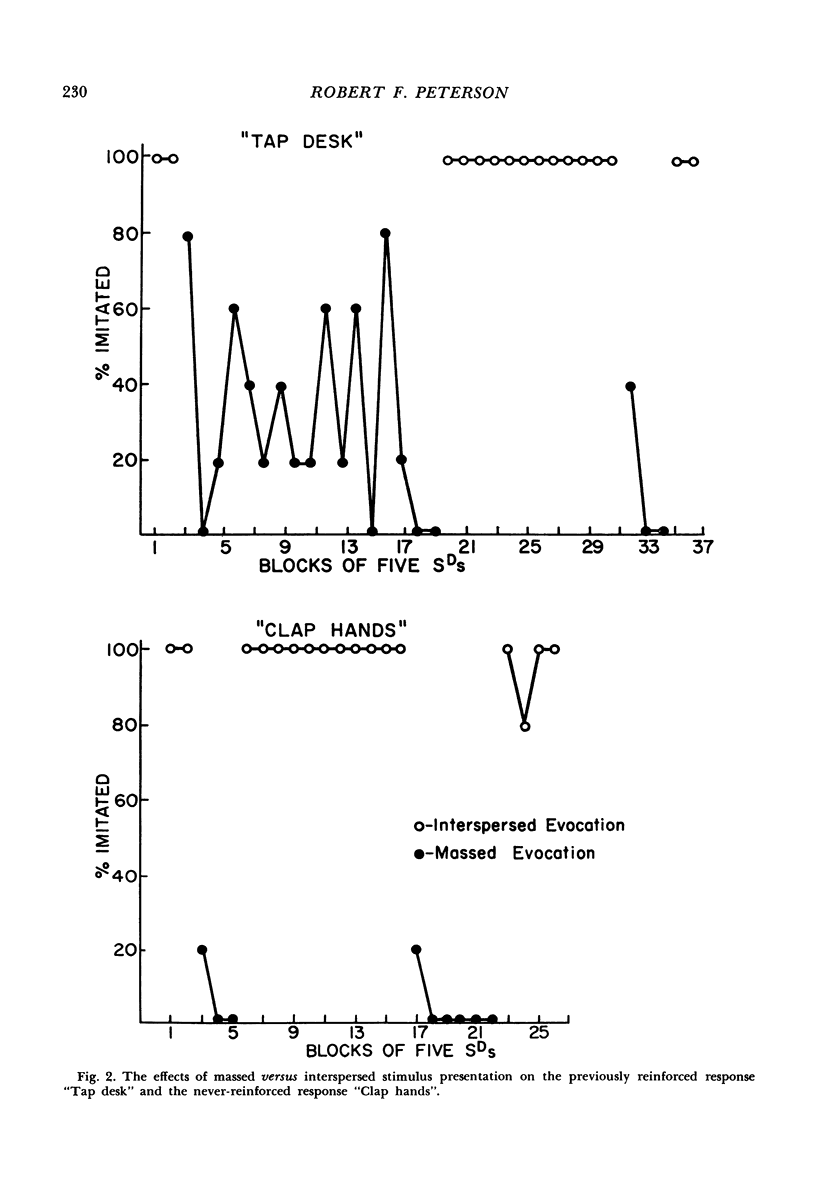
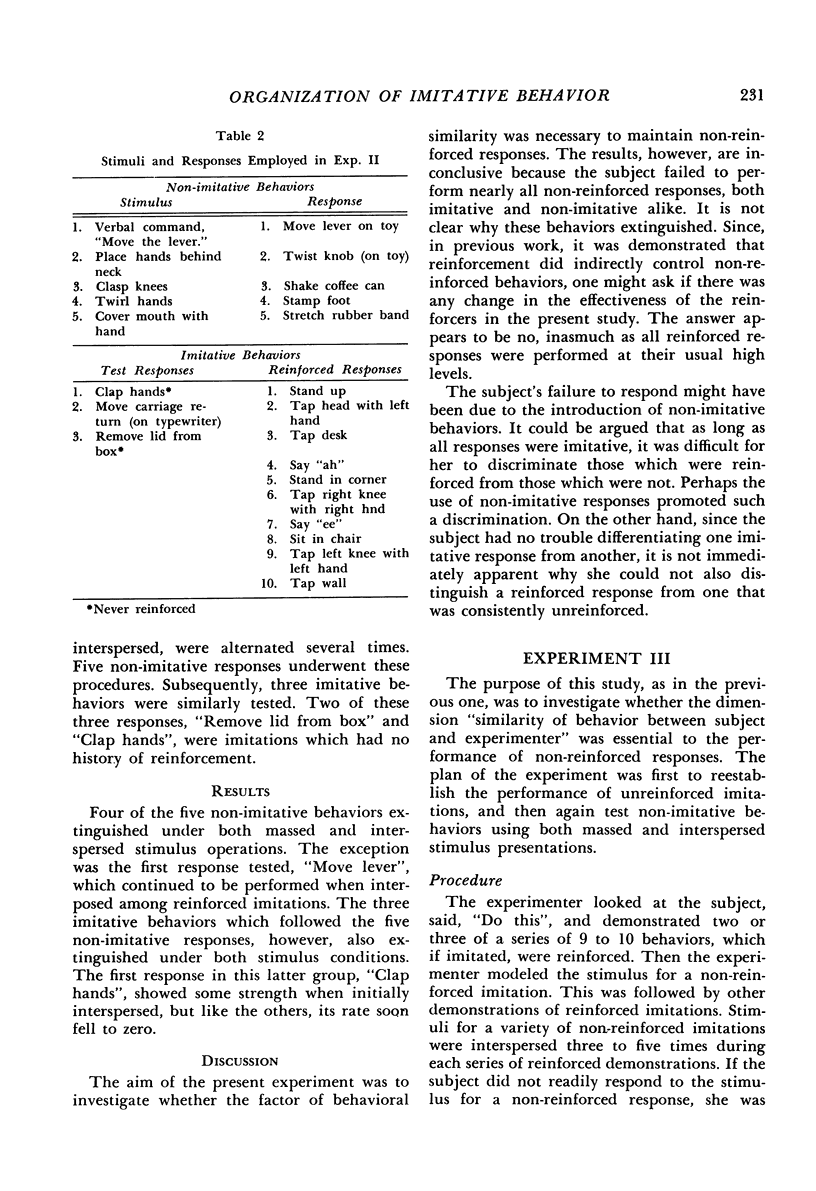
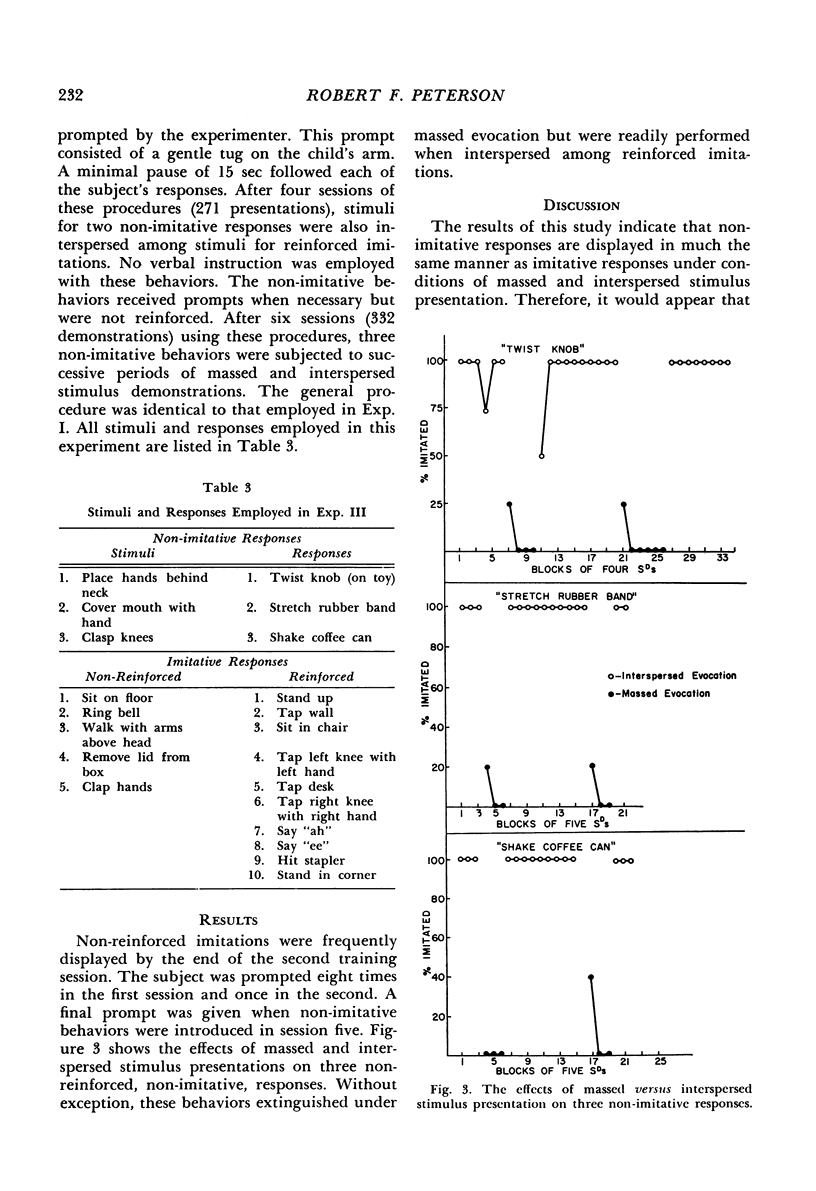
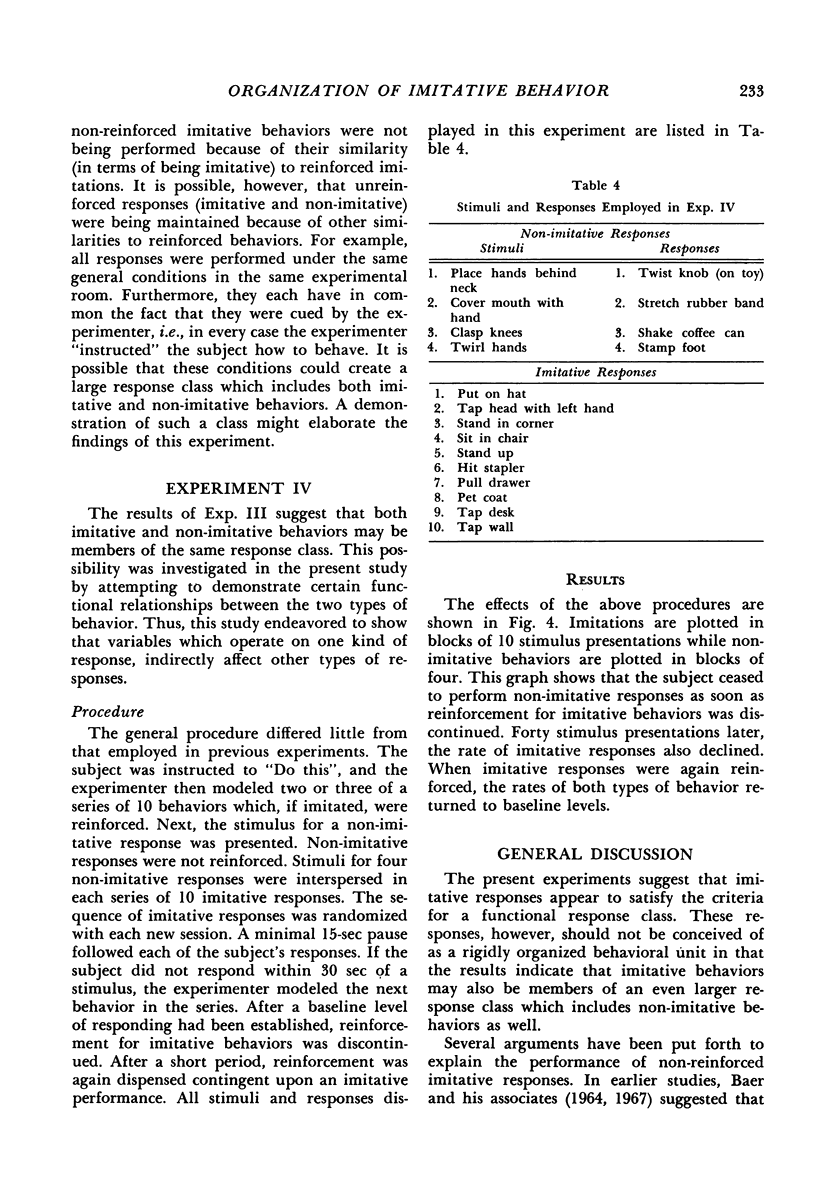


Selected References
These references are in PubMed. This may not be the complete list of references from this article.
- Baer D. M., Peterson R. F., Sherman J. A. The development of imitation by reinforcing behavioral similarity to a model. J Exp Anal Behav. 1967 Sep;10(5):405–416. doi: 10.1901/jeab.1967.10-405. [DOI] [PMC free article] [PubMed] [Google Scholar]


